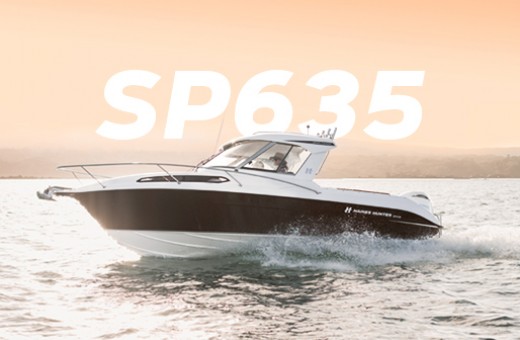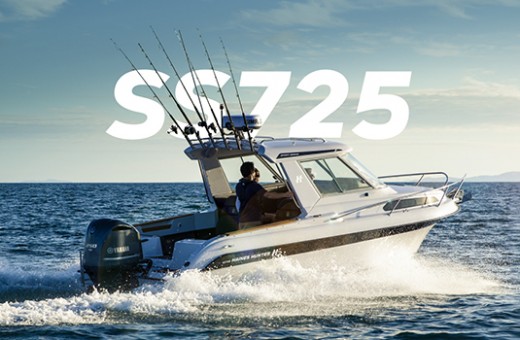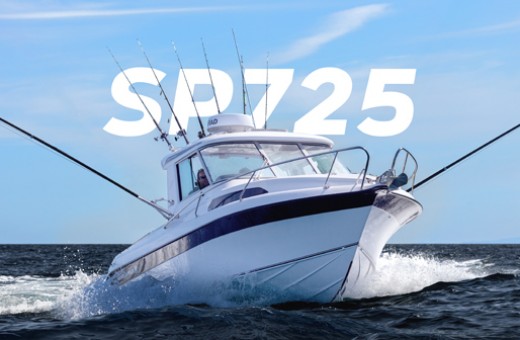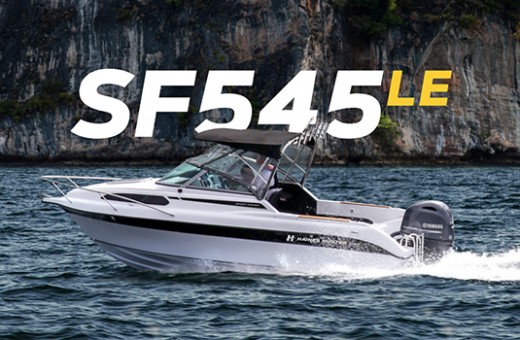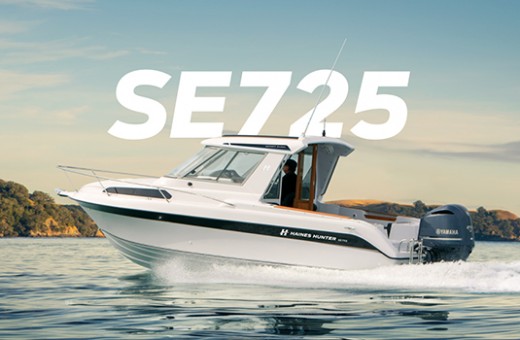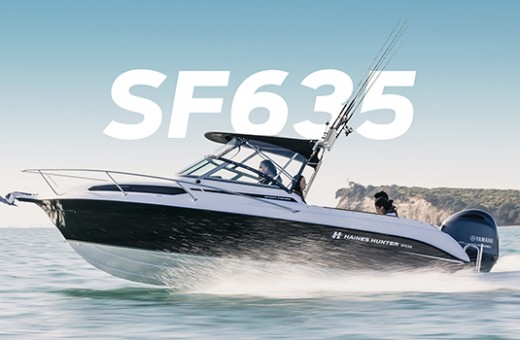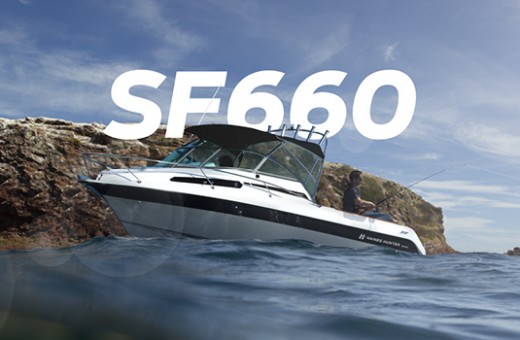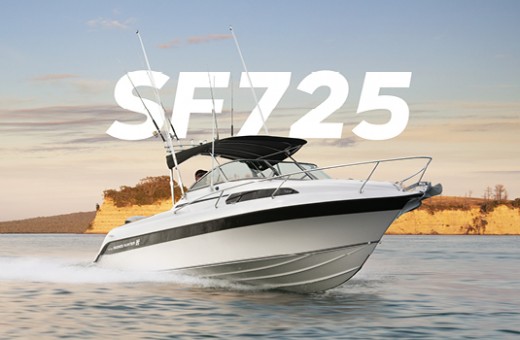Get a Quote
Owner Care
Properly caring for your Haines Hunter is essential for ensuring longevity, peak performance, and safety. There are a few things you can do to ensure your vessel stays in optimal condition.
Transporting
There are a few things that need to be done to get your Haines Hunter to the ramp safely. Remember to check the following before hitting the water:
• The outboard has been tilted up to avoid the leg dragging.
• The prop flag has been securely attached.
• The rear tie downs have been properly fastened to ensure the boat does not slide off the trailer if the front winch fails.
• The trailer’s winch has been locked in place.
• The safety chains are attached from the trailer to the towing eye of the boat.
• The hitch is correctly set onto the vehicle's tow ball and all lock pins are secured.
• The trailer to vehicle safety chain is attached correctly and the breakaway cord is connected.
• If you have a Sport Fisher model, do not tow with the Bimini cover or clears attached. Remove the canvas to reduce the stress wind will cause on the frame.
Haines Hunter takes no responsibility for the way boats are trailered and loaded while travelling. All towing weights advertised are based on a basic spec boat with no fuel, water or gear. Boats should always be fuelled as close to the launching destination as possible to avoid extra weight while trailering.
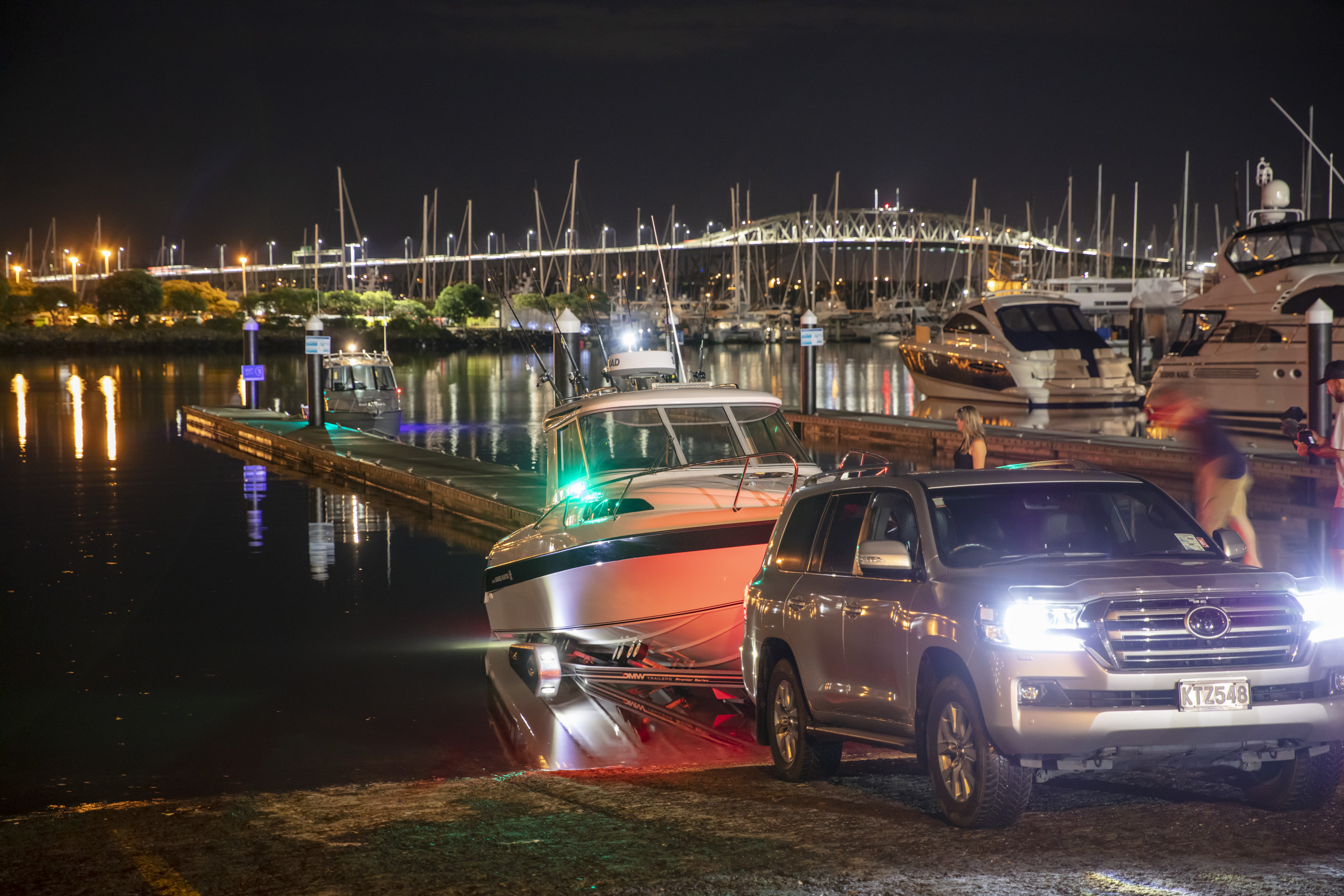
Launching
Before launching your boat at the ramp, pull over and do a few safety checks. Do not do these on the ramp, as you will hold up the queue to get into the water.
• Double check the number of life jackets on the boat and confirm there is one for each passenger.
• Ensure all bungs are securely in place.
• The prop flag has been removed.
• The rear tie-downs have been removed.
• If the boat is being tied to a dock attach fenders.
• The stern and bow ropes are attached.
• Turn on your battery isolation switch.
• Your aerials, both AM/FM and VHF, are up.
• Ensure the D shackle can be removed easily on the boat ramp. If not, get the required tool ready.
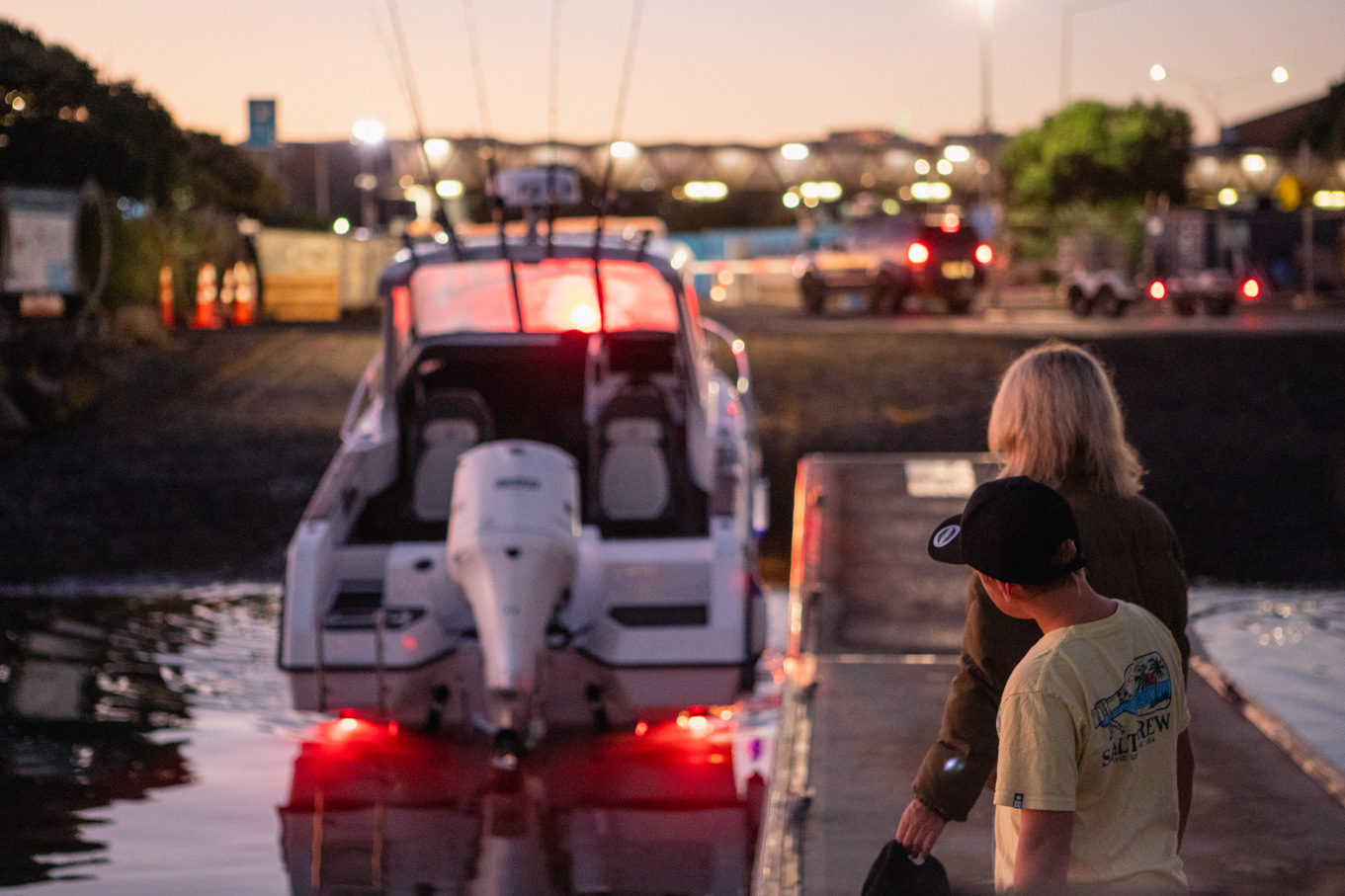
Departing
Before departing confirm the passengers are each wearing their life jackets correctly. Confirm the vehicle and trailer used for launching the boat are parked correctly and the vehicle’s headlights are off. Make sure all loose items are secured and your passengers know where to hold on when speeds increase.
When leaving your launch point, it is recommended you give the Coastguard a call to let them know your planned route. Stow away your ropes and fenders. Double-check the forecast and tide times to ensure you are aware of the conditions. Remain on the correct side of the channel when leaving the shore and follow the harbours' speed limits.
• Check the weather forecast and tides are appropriate.
• Ensure all bungs are securely in place.
• You have at least two different ways of communicating. This could be a phone in a waterproof bag and a VHF radio.
• Everyone on board knows how to start the boat and drive it in case of an emergency.
• Your safety kit is fully stocked and accessible to all passengers. It should contain the following:
- Fire Extinguisher
- EPIRB
- Emergency Torch
- Lifejackets
- Throw Rope
- VHF (Standby channel 16)
- Grab Bag
- Boat Hook
- Spare Lines
- Flashlight
- First Aid Kit
- Whistles
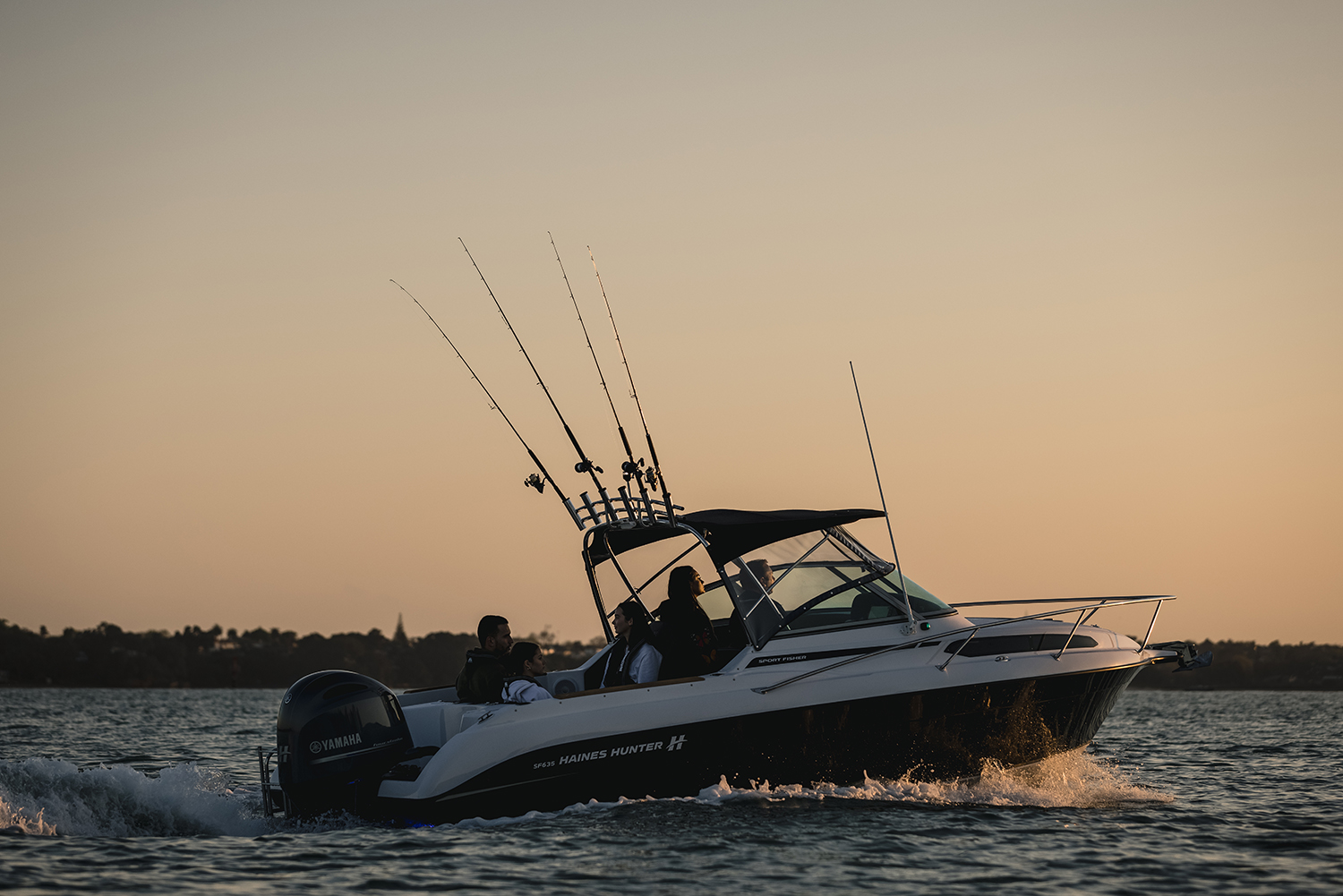
Cleaning and Storing
After an enjoyable day on the water your Haines Hunter will need a good wash to help keep it looking great and going well for years to come. Saltwater can corrode metals five to ten times faster than fresh water, so maintenance is crucial to prevent damage. To wash your boat, first remove all gear and your catch. Unplug all bungs and hose down the exterior. To clean the exterior gel coat, utilise a car wash product that contains wax, such as CRC Wash & Wax. Do not use household cleaning products as these are likely to contain high levels of alkaline which will be harmful.
After washing, thoroughly rinse the entire exterior of the boat with plenty of fresh water. For soft top boats, make sure to clean between the clears and aluminium surrounds to minimise salt build-up and maintain their condition. To ensure easy removal of the boat cover, apply silicon or Vaseline to the inside of the boat cover snap socket. This helps lubricate the fastener, ensuring smooth operation.
Do not scrub the Perspex windows as this could scratch and damage them. Traditional window cleaners can cause damage to the surface. Instead, opt for a cleaner specifically designed for acrylic materials. For enhanced visibility during rainy conditions, apply Rain-X Glass Water Repellent to your windscreen. This will repel rainwater and maintain visibility. When cleaning the upholstery, use warm soapy water instead of harsh spray-on cleaning products, as these can compromise the durability of the marine vinyls. In case of mold, employ a soft brush for cleaning.
It is important to flush your outboard correctly. Modern Yamaha engines are equipped with a static flush feature. To initiate the flush, attach a hose to the static flush fitting on the engine and run water through it for 10-15 minutes. It's important not to use Salt Away or similar products to flush the internals of the motor, as these substances can accumulate on the internal anodes of the engine.
Additionally, avoid running the engine while flushing and do not use outboard motor flush muffs. When performing the flushing process, ensure that the engine is tilted in the up position. Once the flushing is complete, tilt the engine down to allow the water to drain properly. Your engine paint is a protective coating for the metal beneath. If you scratch the paint, be sure to have the scratch repaired. Yamaha offers touch up paint available from an authorised Yamaha dealer.
Post wash, make sure to switch off your battery isolation switch and store your boat flat with the bow angled upward slightly. If your boat has a fridge/freezer beneath the Deluxe Back to Back seats, use a spacer between the seat and the base to ensure constant air flow and avoid the growth of mold.
If your boat has a fridge in the forward cabin, keep the door open to provide continuous air flow and prevent mold build-up. Some fridge models may have a small latch to keep the door open. Undo the bungs located at the transom to allow for proper ventilation and prevent moisture build-up. Before enclosing the boat with covers, make sure the inside is completely dry to prevent moisture-related issues.
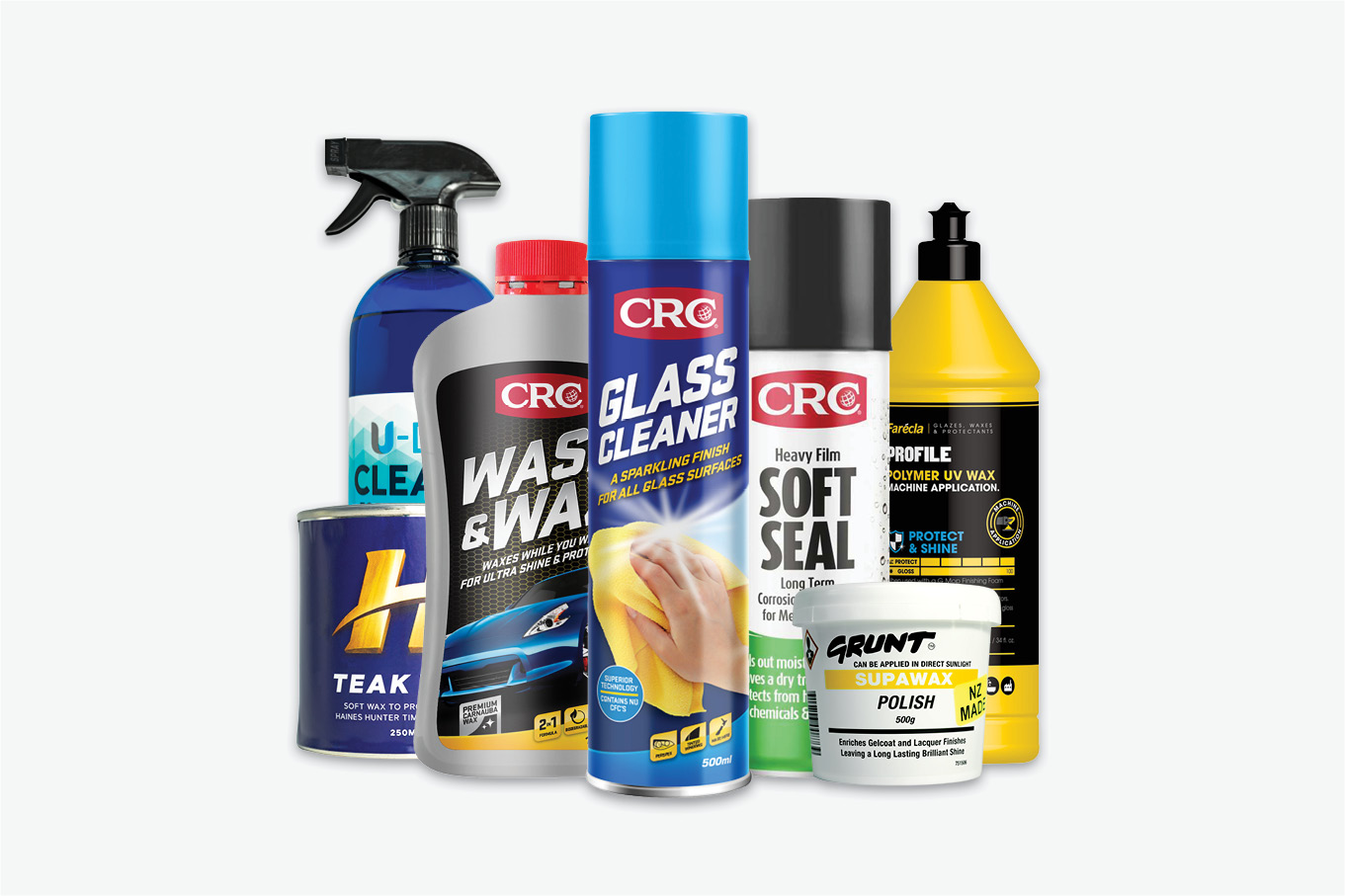
Docking and Mooring
Docking or mooring your Haines Hunter means maintenance will need to be increased. Protect the hull of your boat by applying antifoul. Regular inspections are an absolute must to ensure the antifoul is reapplied when needed.
Qualified technicians must fit the correct anodes to the boat. These must also be regularly inspected and replaced to ensure your boat remains in peak condition. A boat cover is highly recommended to protect the boat from the elements. An auto bilge must be installed to prevent rainwater from flooding the boat. This must be solar to ensure the battery always remains charged.
The Haines Hunter team does not claim responsibility for any damages incurred by incorrectly caring for the boat while docked or moored as it is the owner’s responsibility to take these extra measures.
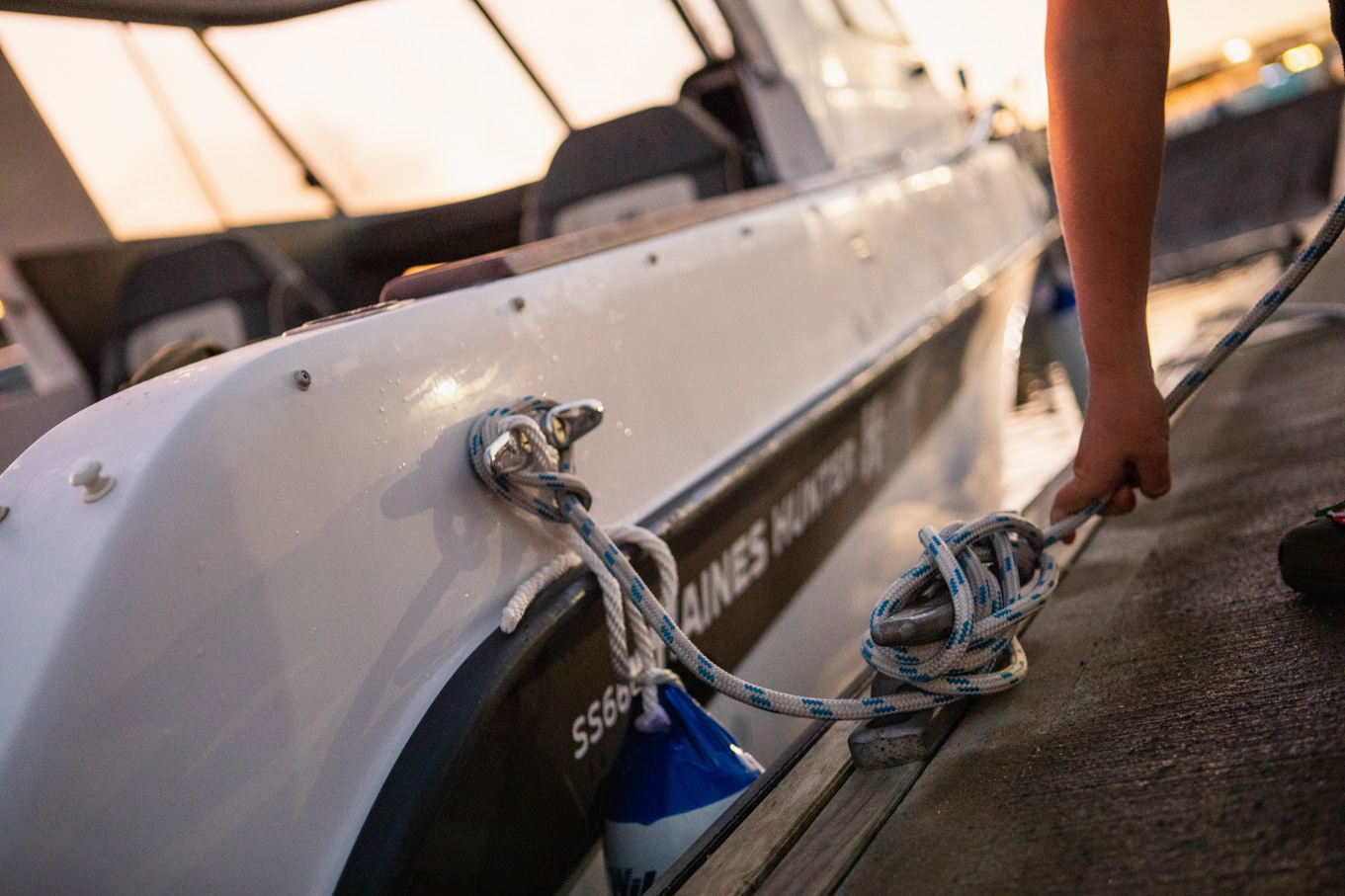
Fuelling
It is recommended to never run your boat lower than 10% of its total fuel tank volume advertised. For example, if you have a 140L tank you should never run it lower than 14L. The advertised tank size does not account for your fuel tank not being filled due to the boat not being perfectly level.
It is important to consider that the fuel levels will be affected by the pitch and roll, especially when the fuel is low. Always fill your Haines Hunter on the way to the boat ramp and never store your boat with a FULL tank. Keep the fuel tank approximately 3/4 full, as overfilling may cause fuel expansion and escape through the air vent in warmer climates. Fuel can go stale, potentially clogging the fuel system.
To extend its storage life, occasionally top up with one-third fresh fuel, which restores volatile components that may have evaporated. If the boat will not be used for two or more months, consider emptying the tank or using a fuel stabiliser. Ensure to carefully read and follow the instructions when using a stabiliser.
Reset your trip fuel on the engine management gauge at the start of a trip after filling your tank. This will allow you to calculate your trip’s fuel effectively so you can track how many litres you have used. Contact your local dealer if you need assistance with understanding how to correctly do this. Because the boat is not always level, variations in fuel readings by the sender unit are expected.
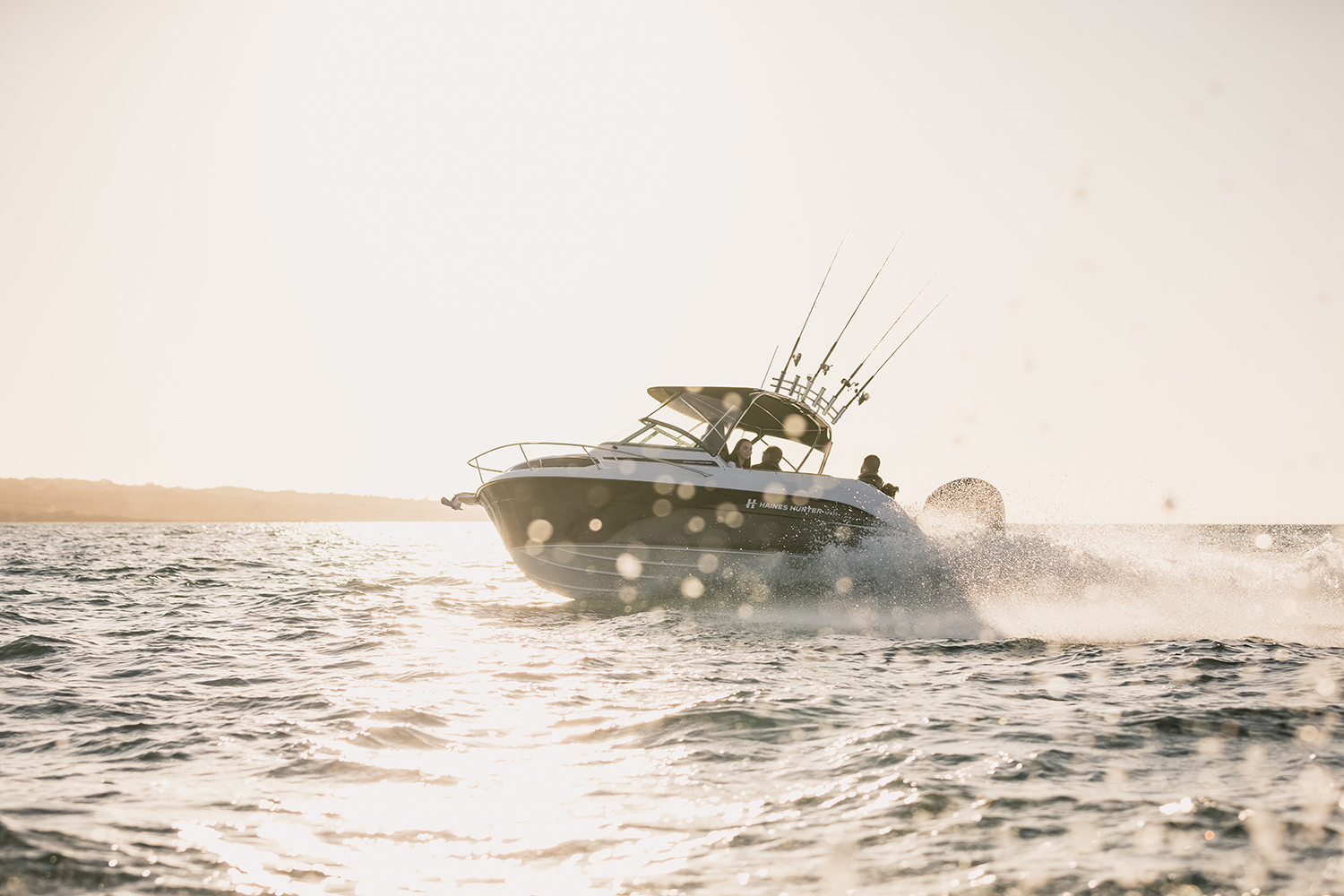
If you need any more tips and tricks, contact your local Haines Hunter dealer. you can find them here.


